Those of you who have visited our shop on Whidbey Island are often amazed and enchanted by the 19th century Central Asian silk robes and textiles we collected in Uzbekistan. For the next three months there is an outstanding collection of antique ikat robes and textiles, “Colors of the Oasis” on exhibit at the Seattle Asian Arts Museum (SAM) in Seattle.
This wonderful collection on loan from Washington DC’s Textile Museum was donated by American businessman Murad Megalli, who was collecting textiles in Central Asia at the same time we were … though on a quite different budget than we two penurious diplomats.
“Ikat” is actually a Malay word describing the tie-dye technique of making shapes and designs in fabric. Many folks are familiar with the ikat, mostly cotton, fabrics of Southeast Asia. The Uzbeks actually call their silk tie-dyed fabrics “adras” or “atlas” which they translate into English as “national cloth”. Still, the textile world has chosen to call the complex and colorful Uzbek silk tie-dyed fabrics by the Malay word–ikat–so we do too.
The Uzbeks have been making these silk fabrics they turn into clothes, both robes and trousers for men and women since they stole the art of making silk from the secretive Chinese many centuries ago. At about the same time, they apparently stole the technique of tie or “resist-dying”, as it is more formally known, from Asia as well.
The process of making ikat is incredibly
complex, and too lengthy for us to describe here. To find a good description, go to the SAM exhibition.
Sericulture (silk making) continues to be practiced in present-day Uzbekistan. The Bolshevik revolution forced all peoples of the Soviet Union into factory towns and collective farms. This resulted in gaudy, low quality mass production ikat, which is now being replaced by a return to the old techniques practiced for centuries,
Drive anywhere in Uzbekistan, and you notice the roads are lined with mulberry trees (also stolen from China), whose leaves are the favored food of silkworms. Visiting any of the many silk workshops, it is amazing to hear the audible “crunch, crunch, crunch” of thousands of silk worms on tables in long darkened sheds happily feeding on fresh mulberry leaves.
Prior to the Russian conquest of Central Asia in the 1860’s, the lining of ikat robes was usually home-spun cotton cloth decorated with block-printed designs.
After the arrival of Russian trade goods, robe linings were made of mercerized cotton yard goods printed in colorful patterns made in textile factories in European Russia. The traders kept bringing different and updated patterns each season, which encouraged the seamstresses to keep up with the latest fashion patterns.
An interesting note: the Uzbeks invented their own “Scotchguard”… by rubbing a layer of egg white on the fabric, making a glaze that protected the silk. You can often still feel it on the fabric. Although you can’t touch the ikat at the museum, you CAN touch it at our shop, Music for the Eyes.
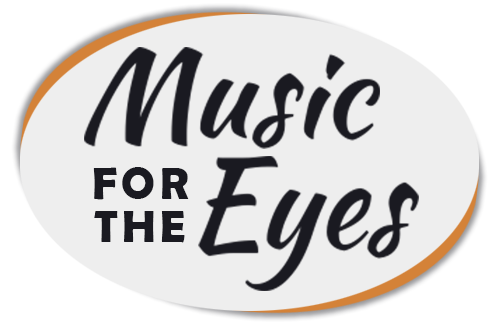

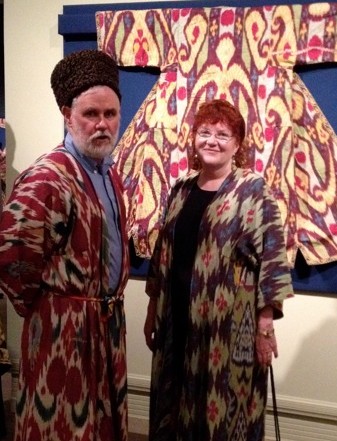
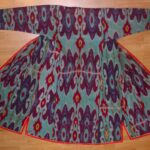
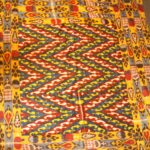
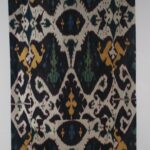
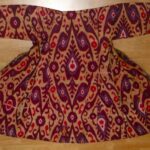

you two look great in those outfits!!
You look great in those CHAPANs! Zarina and I went to this exhibition when they were here in the Museum of Textiles. The colors are fantastic!!
Farhod and Shirin going strong!
Sharoon,
I reall appreciate ur way of describing the art and generating interest even person like me who i not basically English speaking person.
I wish to kep on receiving such an interesting articles.
Shukaria